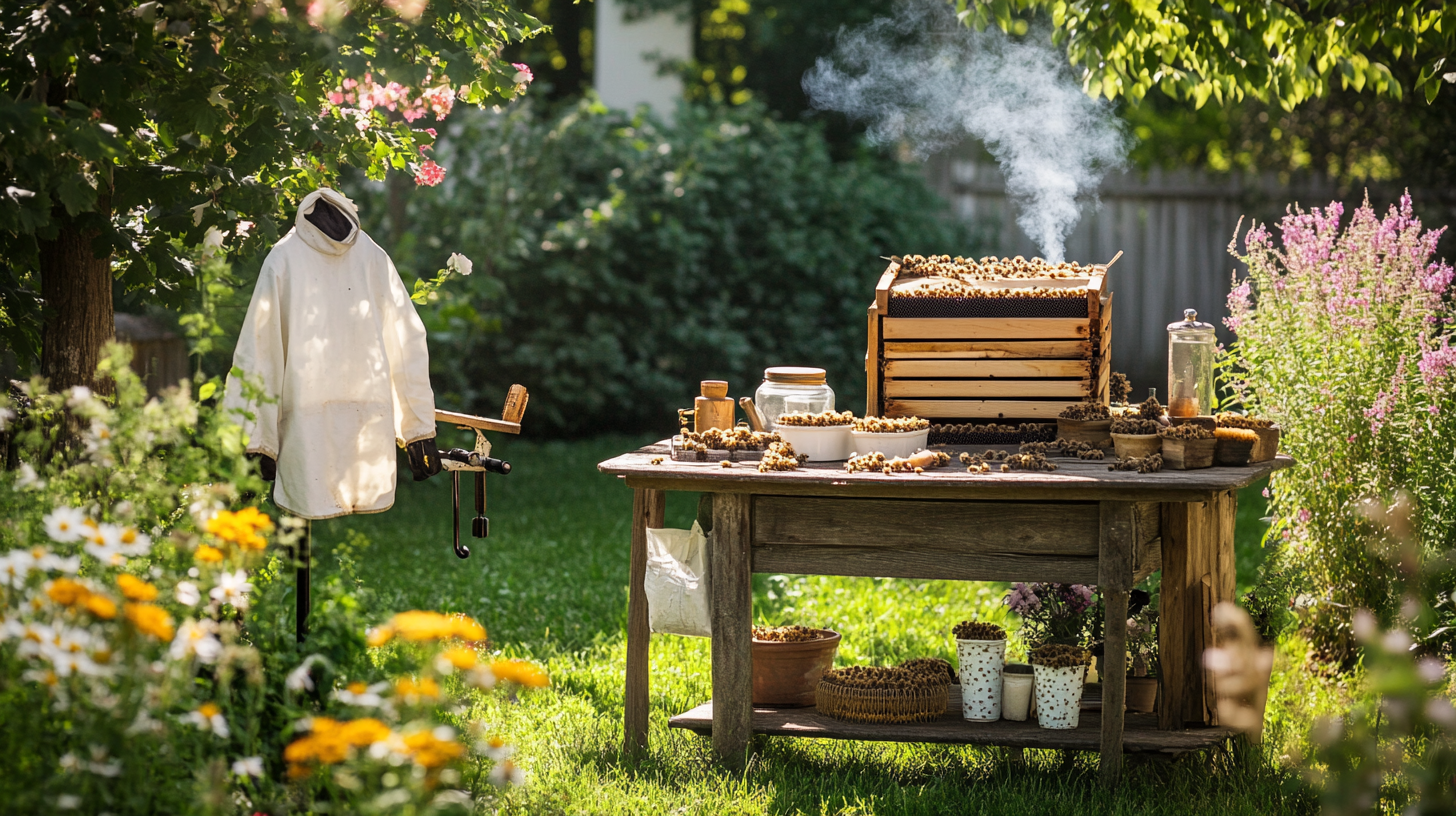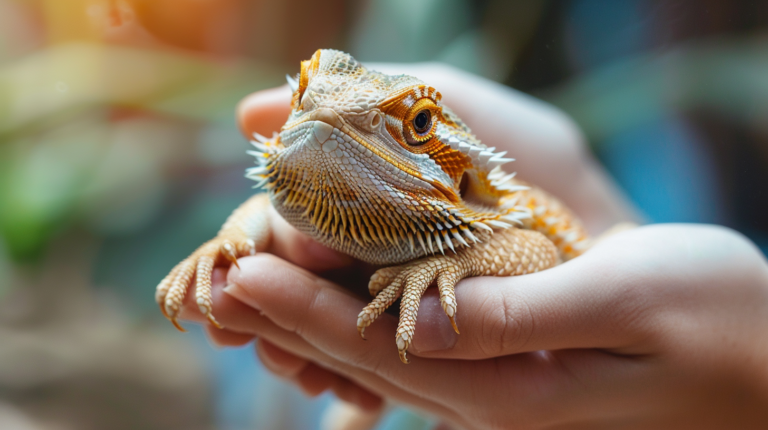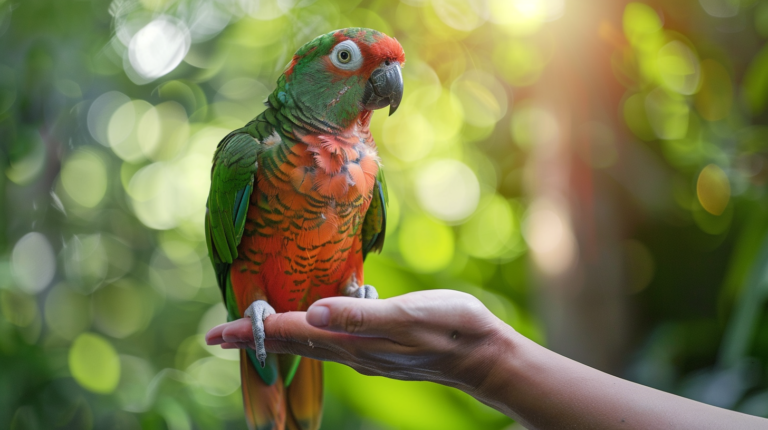Discover the essential beekeeping starter kit tools every beginner needs. Complete guide to backyard beekeeping tools for pet lovers expanding into beneficial insect care.
Table of Contents
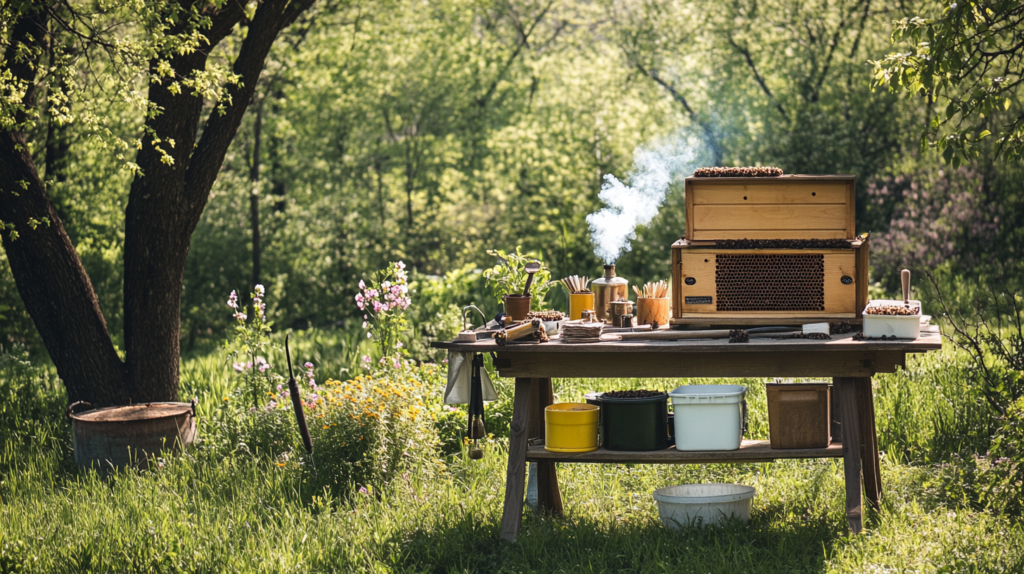
Starting your journey into beekeeping can feel overwhelming, especially if you’re already passionate about pet care and animal welfare. A comprehensive beekeeping starter kit is your foundation for success, whether you’re a devoted pet owner looking to create a more sustainable backyard ecosystem or someone who wants to expand their animal care expertise beyond traditional pets. Just as you wouldn’t bring home a puppy without the proper supplies, entering the world of beekeeping requires the right tools, knowledge, and preparation.
Beekeeping has experienced a remarkable surge in popularity, with the American Beekeeping Federation reporting over 212,000 beekeepers in the United States as of 2023. This growth isn’t just among commercial operations – backyard beekeeping has become increasingly popular among pet enthusiasts who appreciate the connection between caring for animals and supporting local ecosystems.
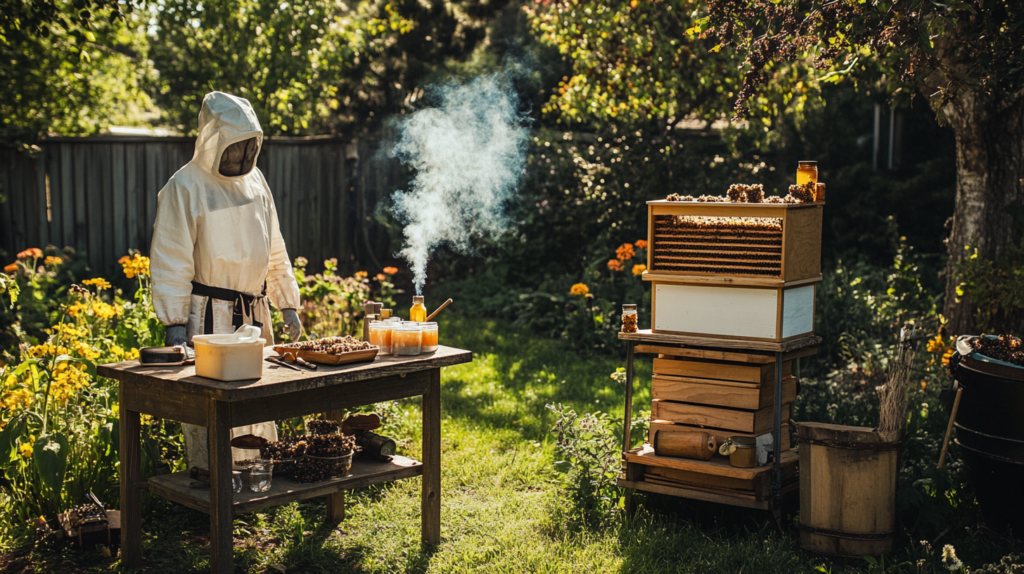
In this comprehensive guide, we’ll explore the seven essential tools every beginner beekeeper needs, helping you build the perfect beekeeping starter kit while understanding how this rewarding hobby complements your existing passion for animal care.
Why Pet Lovers Make Great Beekeepers
Before diving into the essential tools, it’s worth understanding why many pet owners find beekeeping so appealing. The skills you’ve developed caring for pets – observation, patience, routine maintenance, and understanding animal behavior – translate remarkably well to beekeeping. Both activities require:
- Regular monitoring and health checks
- Seasonal care adjustments
- Understanding of animal behavior and needs
- Commitment to long-term welfare
- Creating safe, enriched environments
According to Dr. Marla Spivak, a renowned entomologist at the University of Minnesota, The same nurturing instincts that make someone an excellent pet owner often translate into successful beekeeping practices.
The 7 Essential Tools for Your Beekeeping Starter Kit
1. Protective Beekeeping Suit and Veil
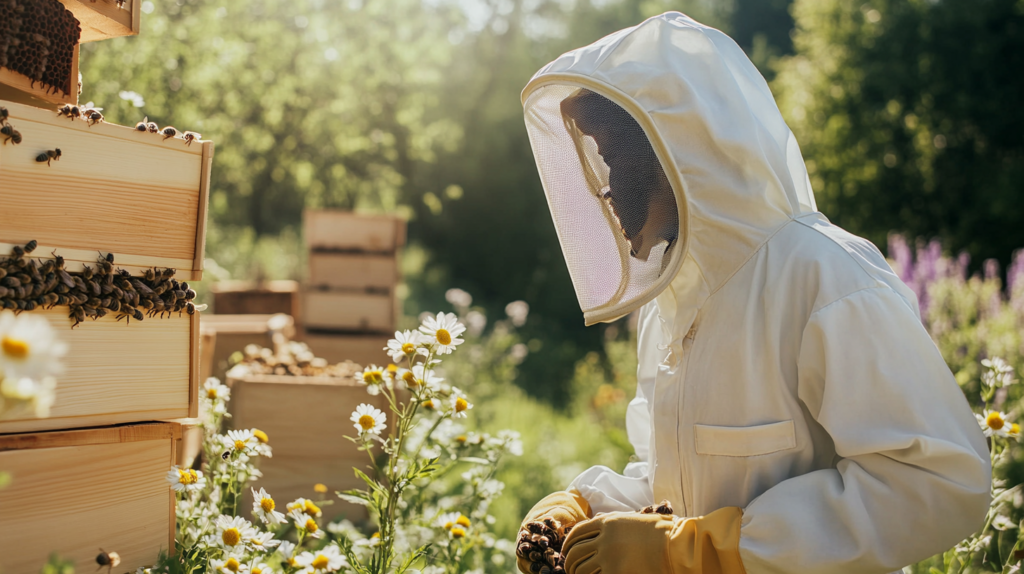
Your safety is paramount when working with bees, making a quality protective suit the most critical component of any beekeeping starter kit. Unlike the predictable nature of most pets, bees can become defensive when their hive is disturbed, making proper protection non-negotiable.
Key Features to Look For:
- Full-body coverage with reinforced seams
- Attached veil with excellent visibility
- Breathable fabric for comfort during long inspections
- Elastic cuffs at wrists and ankles
- Light colors (white or tan) as bees are less aggressive toward lighter shades
Quality Options:
- Beginner-friendly: Canvas suits ($80-120) – durable and affordable
- Professional grade: Ventilated suits ($150-250) – better airflow and comfort
- Premium options: Ultra-light suits ($200-350) – maximum comfort for extended use
Many experienced beekeepers recommend starting with a mid-range ventilated suit. As noted by the National Beekeeping Society, “A comfortable beekeeper is a confident beekeeper, and confidence leads to calmer hive inspections.”
2. Smoker and Fuel
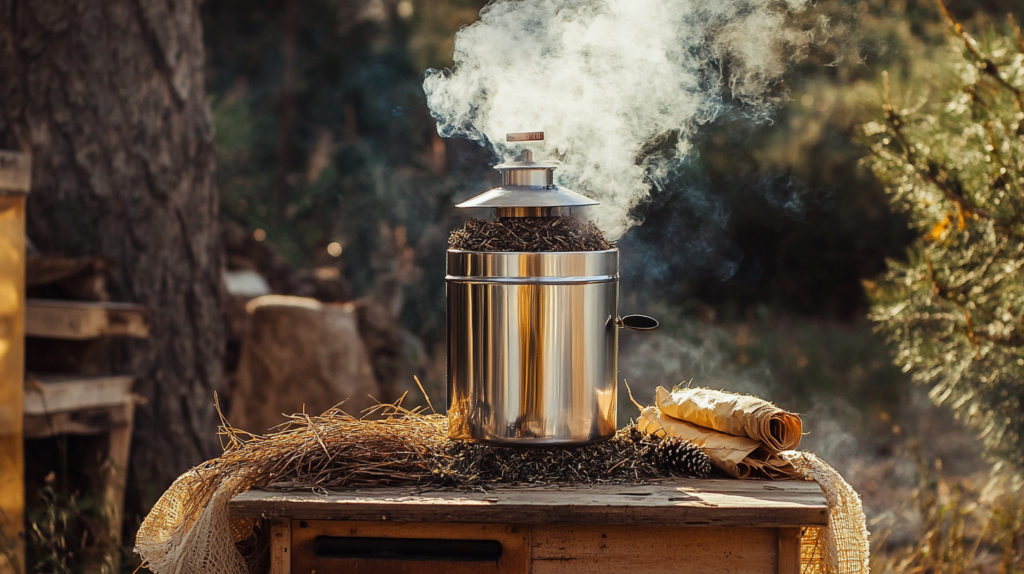
The smoker is arguably the most important tool for calm hive management. It works by masking alarm pheromones that bees release when they perceive a threat, allowing you to work with your colonies peacefully.
Smoker Essentials:
- Stainless steel construction for durability and heat resistance
- Bellows system for consistent airflow control
- Safety features like heat shields and stable bases
- Appropriate size – 4-inch diameter for beginners
Fuel Options for Your Smoker:
- Pine needles – readily available and long-burning
- Burlap – consistent, cool smoke production
- Cotton rags – easy to light and maintain
- Commercial fuel pellets – convenient but more expensive
- Dried grass or leaves – natural and cost-effective
Pro Tip: Never use synthetic materials or treated wood as fuel, as toxic smoke can harm both bees and the beekeeper.
3. Hive Tool
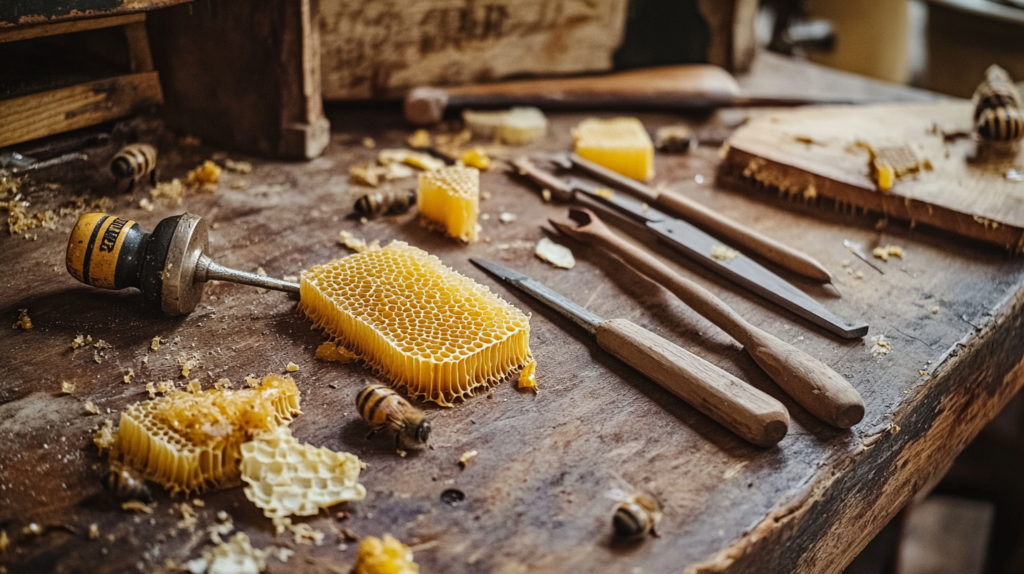
The hive tool is your primary instrument for hive manipulation and inspection. Bees naturally propolize (seal with bee glue) all hive components, making a quality hive tool essential for separating frames and hive bodies.
Types of Hive Tools:
| Tool Type | Best For | Price Range | Key Features |
| Standard Hive Tool | General use | $15-25 | Simple, reliable, multipurpose |
| J-Hook Tool | Frame manipulation | $20-35 | Curved end for easy frame lifting |
| Pry Bar Style | Heavy-duty work | $25-40 | Extra leverage for stuck components |
| Multi-tool | Versatile beekeepers | $30-50 | Multiple functions in one tool |
Essential Functions:
- Prying apart hive boxes and frames
- Scraping excess wax and propolis
- Lifting frames during inspections
- Nail pulling for hive repairs
4. Complete Hive Setup

Your hive is the foundation of your beekeeping operation. The Langstroth hive design, invented in 1852, remains the most popular choice for backyard beekeeping tools due to its modular design and ease of management.
Standard Langstroth Hive Components:
Bottom Board:
- Screened bottom boards – improved ventilation and mite monitoring
- Solid bottom boards – traditional, more protection in cold climates
- Price range: $25-60
Deep Hive Bodies (Brood Chambers):
- 10-frame capacity standard size
- 8-frame option available for lighter management
- Typically need 2 for adequate brood space
- Price range: $30-50 each
Frames and Foundation:
- Deep frames for brood area (9⅛” depth)
- Medium frames for honey supers (6¼” depth)
- Wired foundation recommended for beginners
- Price range: $2-4 per frame with foundation
Inner Cover and Telescoping Top:
- Inner cover provides dead air space for insulation
- Telescoping top protects from weather
- Combined price range: $40-70
Complete Hive Investment:
- Basic setup: $200-300
- Professional setup: $300-500
- Premium setup: $400-700
5. Quality Bee Brush
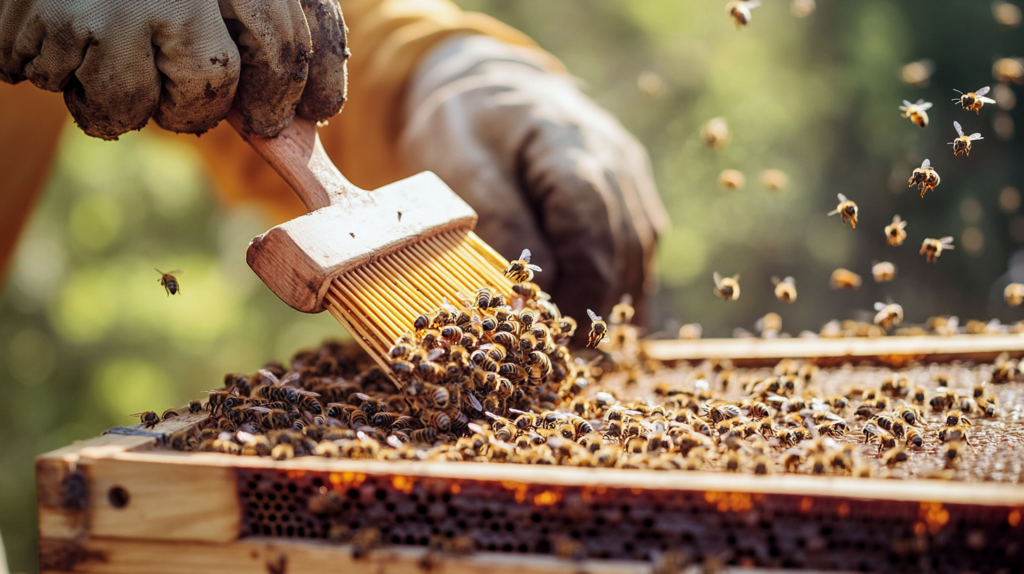
A bee brush is essential for gently moving bees during hive inspections without harming them. This tool demonstrates the same gentle care principles that pet owners apply to their animals.
Bee Brush Characteristics:
- Soft, natural bristles that won’t harm bees
- Appropriate length (3-4 inches) for effective use
- Comfortable handle for extended use
- Easy to clean for hive hygiene
Proper Brushing Technique:
- Use gentle, sweeping motions
- Brush parallel to the frame surface
- Work slowly to allow bees to move naturally
- Clean brush regularly to prevent disease transmission
Alternative Options:
- Goose feathers – traditional, ultra-gentle option
- Soft-bristled paintbrush – budget-friendly alternative
- Bee escape boards – reduces need for brushing
6. Feeders and Feeding Supplies
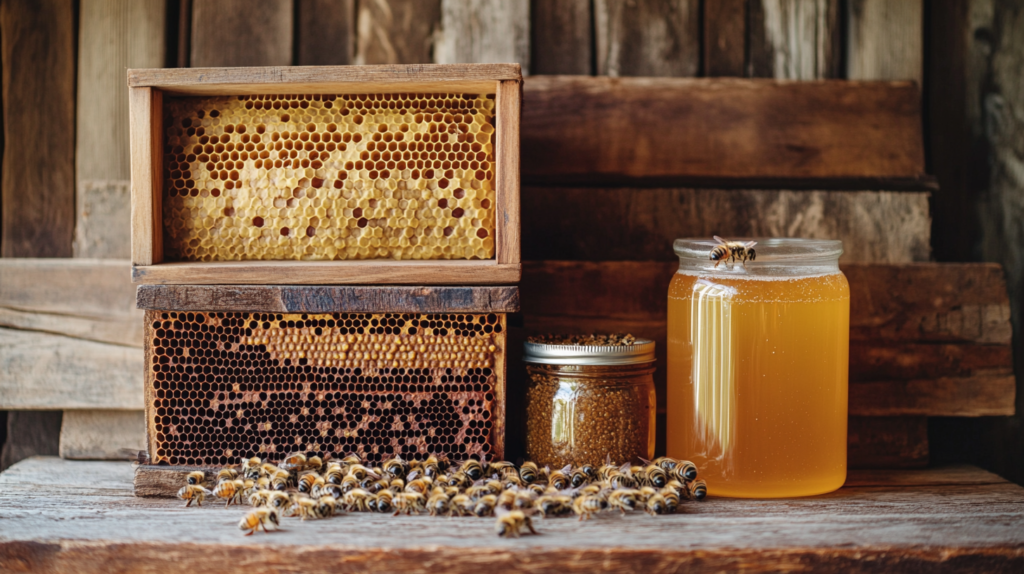
Proper nutrition is crucial for colony health, especially during establishment or periods of nectar scarcity. Just as you ensure your pets have consistent access to quality food, your bees need reliable nutrition sources.
Types of Bee Feeders:
Entrance Feeders:
- Pros: Easy to install and monitor
- Cons: Can encourage robbing by other bees
- Best for: Emergency feeding only
- Capacity: 1-2 pounds of syrup
Top Feeders:
- Pros: Large capacity, reduced robbing risk
- Cons: More expensive, can trap bees
- Best for: Fall feeding and new colonies
- Capacity: 5-10 pounds of syrup
Boardman Feeders:
- Pros: Inexpensive, easy to refill
- Cons: Small capacity, weather exposure
- Best for: Light supplemental feeding
- Capacity: 1 quart
Feeding Schedules and Ratios:
| Season | Syrup Ratio | Purpose | Frequency |
| Spring | 1:1 (Sugar:Water) | Stimulate brood production | Weekly as needed |
| Summer | Usually unnecessary | Natural nectar available | Emergency only |
| Fall | 2:1 (Sugar:Water) | Winter preparation | Heavy feeding period |
| Winter | Emergency only | Candy boards if needed | Monitor stores |
7. Record Keeping Materials

Professional beekeeping, like quality pet care, requires detailed record keeping. Documentation helps you track colony health, identify patterns, and make informed management decisions.
Essential Records to Maintain:
- Inspection dates and weather conditions
- Queen status and egg-laying patterns
- Brood development stages
- Honey stores and feeding records
- Treatment applications and results
- Seasonal observations and changes
Record Keeping Options:
Digital Solutions:
- Hive Tracks app – comprehensive digital logging
- Apiary Book – cloud-based hive management
- HiveMind – collaborative beekeeping platform
- Benefits: Weather-resistant, searchable, backup capabilities
Traditional Methods:
- Waterproof notebooks – reliable and simple
- Pre-made inspection sheets – structured format
- Hive record cards – attach directly to hives
- Benefits: No technology dependence, immediate access
Sample Inspection Record Format:
Date: ___________ Weather: ___________ Temperature: _____
Hive ID: _______ Inspector: ___________
Queen Status: □ Seen □ Eggs observed □ Marked □ Unmarked
Brood Pattern: □ Excellent □ Good □ Fair □ Poor
Population: □ Strong □ Moderate □ Weak
Temperament: □ Calm □ Moderate □ Defensive
Notes: ________________________________
Action Items: __________________________
Next Inspection: _______________________Additional Considerations for Your Beekeeping Starter Kit
Seasonal Preparation
Spring Setup (March-May):
- Install package bees or nucleus colonies
- Begin regular inspections every 7-10 days
- Monitor queen acceptance and egg laying
- Provide supplemental feeding if needed
Summer Management (June-August):
- Add honey supers for harvest
- Monitor for swarm preparations
- Ensure adequate ventilation
- Watch for signs of disease or pests
Fall Preparation (September-November):
- Harvest honey crop
- Begin winter feeding program
- Reduce hive entrances
- Apply mite treatments if necessary
Winter Maintenance (December-February):
- Minimal disturbance to colonies
- Monitor food stores from outside
- Ensure proper ventilation without cold drafts
- Plan for next season’s expansion
Creating a Pet-Friendly Apiary
If you’re maintaining other pets alongside your beekeeping operation, consider these integration strategies:
Location Planning:
- Distance from pet areas – minimum 30 feet from dog runs or outdoor cat areas
- Flight path considerations – ensure bee flight paths don’t cross high-traffic pet areas
- Water source placement – provide bee water sources away from pet drinking areas
Safety Protocols:
- Pet behavior training – teach pets to avoid the apiary area
- Emergency procedures – know how to treat pets for potential bee stings
- Protective barriers – consider fencing around the apiary if needed
Investment and Budget Planning
Building a comprehensive beekeeping starter kit requires a significant initial investment, similar to setting up for a new pet. Here’s a realistic budget breakdown:
Essential Startup Costs:
- Protective gear: $100-200
- Hive equipment: $200-400
- Tools and accessories: $100-150
- Initial bee colony: $150-250
- Total initial investment: $550-1,000
Annual Ongoing Costs:
- Replacement equipment: $50-100
- Feeding supplies: $30-60
- Treatment and medication: $40-80
- Additional colonies: $150-250 each
- Total annual costs: $270-490
Potential Revenue Streams:
- Honey sales: $8-12 per pound locally
- Beeswax products: $15-30 per pound
- Nucleus colony sales: $150-200 each
- Pollination services: $50-200 per hive
Common Beginner Mistakes to Avoid
Over-Inspection: New beekeepers often inspect too frequently, disrupting colony development. Limit inspections to every 7-14 days during active season.
Inadequate Smoker Use: Poor smoker technique leads to defensive bees. Practice lighting and maintaining your smoker before your first hive inspection.
Improper Frame Handling: Rough handling can damage comb and injure bees. Move slowly and deliberately during all hive manipulations.
Ignoring Seasonal Needs: Failing to adjust management practices seasonally can lead to colony stress or failure. Develop a seasonal management calendar.
Insufficient Record Keeping: Poor documentation makes it difficult to track problems or progress. Establish a consistent record-keeping system from day one.
Expert Tips for Success
According to Master Beekeeper Kim Flottum, author of “The Beekeeper’s Bible,” successful beekeeping requires three key elements: “Good equipment, ongoing education, and patience with both yourself and your bees.”
Professional Recommendations:
- Start with two hives – allows for comparison and resource sharing between colonies
- Join a local beekeeping association – invaluable mentorship and support
- Invest in quality equipment – cheaper tools often cost more in the long run
- Plan for expansion – successful beekeepers typically want more hives quickly
- Prioritize bee health – healthy bees are productive and easier to manage
Seasonal Success Strategies:
Spring: Focus on colony growth and queen acceptance Summer: Monitor for honey production and swarm prevention Fall: Prepare colonies for winter survival Winter: Plan for next season and maintain equipment
Integration with Pet Care Lifestyle
Many pet owners find that beekeeping complements their existing animal care routines beautifully. The skills transfer naturally:
Observation Skills: Both pets and bees require careful observation for health monitoring Routine Care: Regular maintenance schedules benefit both activities Seasonal Awareness: Understanding how seasons affect animal behavior and needs Health Management: Preventive care and early intervention principles apply to both
Time Management Tips:
- Combine inspection schedules when possible
- Prepare equipment the night before inspections
- Batch similar tasks across multiple hives
- Use waiting periods (like pet medication times) for bee-related research
Frequently Asked Questions
Q: How much time does beekeeping require compared to traditional pet care?
A: Beekeeping typically requires 30-60 minutes per hive every 1-2 weeks during active season (April through October), plus seasonal maintenance tasks. This is considerably less daily time commitment than most pets, but requires more intensive focused sessions. Winter months require minimal intervention, similar to caring for hibernating animals.
Q: Can I keep bees if I have outdoor cats or dogs?
A: Yes, but proper planning is essential. Maintain at least 30 feet between hives and pet areas, ensure bee flight paths don’t cross pet zones, and train pets to avoid the apiary. Most pets naturally avoid bee areas after one or two encounters. Consider protective barriers if your pets are particularly curious or aggressive toward insects.
Q: What’s the best beekeeping starter kit for someone with no experience?
A: A quality starter kit should include: a ventilated bee suit with veil ($120-180), stainless steel smoker ($30-50), standard hive tool ($20-30), complete Langstroth hive setup ($250-400), bee brush ($15-25), top feeder ($40-60), and record keeping materials ($20-40). Total investment: $495-785 for quality equipment that will last years.
Q: How do I know if my local area is suitable for backyard beekeeping?
A: Check local zoning laws and HOA restrictions first. Good locations have diverse flowering plants within 2-3 miles, morning sun exposure, wind protection, and accessible water sources. Avoid areas with heavy pesticide use or limited nectar sources. Contact your local extension office or beekeeping association for area-specific advice.
Q: What ongoing costs should I expect beyond the initial beekeeping starter kit?
A: Annual costs typically include replacement equipment ($50-100), sugar for feeding ($30-60), potential medications or treatments ($40-80), and optional expansion colonies ($150-250 each). Most beekeepers spend $200-400 annually after the first year, though honey sales can offset these costs.
Q: Is beekeeping safe for families with children and pets?
A: With proper precautions, beekeeping can be very safe. Maintain adequate distance between hives and play areas, educate children about bee behavior, keep emergency treatment available for stings, and consider your family’s allergy history. Many beekeeping families find it educational and rewarding when managed responsibly.
Building Your Beekeeping Community
Local Resources:
- Beekeeping associations – mentorship and group purchasing power
- Extension services – research-based education and support
- Equipment suppliers – often provide local classes and support
- Online communities – 24/7 support and knowledge sharing
Educational Opportunities:
- Beginner beekeeping courses – hands-on learning with experienced mentors
- Seasonal workshops – specific skill development
- Equipment maintenance classes – extend tool lifespan
- Queen rearing seminars – advanced skill development
For more expert pet care tips and product recommendations, visit BlithePet.com — your trusted source for pet wellness.
Conclusion
Building the perfect beekeeping starter kit is an investment in both your success and the health of your future colonies. Just as you wouldn’t compromise on quality when selecting supplies for your beloved pets, choosing reliable, well-made beekeeping equipment sets the foundation for years of successful beekeeping.
The seven essential tools we’ve discussed – protective gear, smoker, hive tool, complete hive setup, bee brush, feeders, and record keeping materials – form the core of what every beginning beekeeper needs. Remember that beekeeping, like pet ownership, is a journey of continuous learning and adaptation.
Start with quality backyard beekeeping tools, join your local beekeeping community, and approach your new colonies with the same patience and dedication you show your other animals. The rewards of beekeeping – fresh honey, increased garden productivity, and the satisfaction of supporting local ecosystems – make the initial investment worthwhile.
Your experience as a pet owner has already prepared you with many of the skills needed for successful beekeeping. Trust your instincts, continue learning, and enjoy this fascinating addition to your animal care repertoire.
Have a similar experience with your pet or beekeeping journey? Share it in the comments below!

